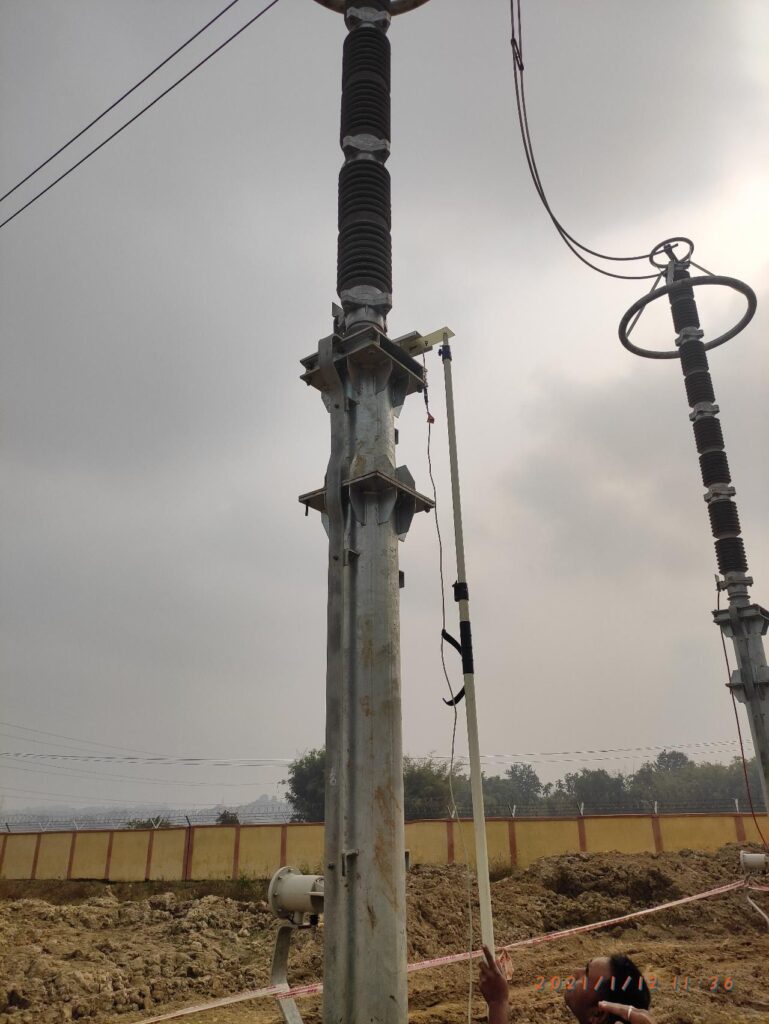
INTRODUCTION
This electrical Lightening Arrester(LA) training course introduces basic safe operational and field diagnostics of LAs with a focus on safe operation, testing, and maintenance of the LAs’ normally installed in substations.
What is a surge arrester in the substation?
A surge arrester is a device to protect electrical equipment from over-voltage transients caused by external (lightning) or internal (switching) events.
Where is the surge arrester placed in the substation?
To protect a unit of equipment from transients occurring on an attached conductor, a surge arrester is connected to the conductor just before it enters the equipment.
What is arrester used for?
The purpose of using a surge arrester is to always limit the voltage across the terminals of the equipment to be protected below its insulation to withstand voltage. This is achieved by connecting elements with an extremely nonlinear voltage-current characteristic (varistor) in parallel to the terminals of the equipment.
How Does a Lightning Arrester Work?
- Metal oxide (MO) surge arresters containing ceramic MO elements mainly made from zinc oxide and bismuth oxide are used.
- The resistor elements offer non-linear resistance such that for normal frequency the power system voltage the resistance is high and the lightning arrester does not conduct.
- When a surge voltage travels along the line and comes to the arrester the gap breaks down and the resistance being low the surge is diverted to the earth.
- After a few microseconds, the surge vanishes and the power frequency voltage is set up across the arrester and the arc current reduces.
- All electrical equipment in an electrical system needs to be protected from voltage surges.
- The rating of the arrester, the class of the arrester, and the location of the arrester all play a part in surge protection.
- Surge arresters protect the equipment of transmission and distribution systems, worth several magnitudes more than the arresters themselves, from the effects of lightning and switching overvoltages.
What are the tests conducted on surge arrester?
- Insulation Withstand Test- is an electrical test carried out on a component or product to determine its insulation strength.
- Residual Voltage test This test confirms that no dangerous voltages are present after the supply has been removed as a result of circuits retaining a charge.
- Power Frequency Voltage versus Time curve
- Internal Partial Discharge Test
- Moisture ingress Test (For Station type Surge Arrester)
Causes for Failure of Metal Oxide Surge Arresters
- Incorrect arrester specification corresponding to actual system voltage and overvoltage stress
- Overloading due to:
o Temporary overvoltages (cracking, puncturing)
o Switching overvoltages (cracking, puncturing, and flashover)
o Lightning overvoltage (change of characteristic/aging, flashover, puncturing).
- External pollution or moisture penetration
- The consequence of aging: Increase in the continuous resistive leakage current. This is a good indicator of the arrester’s condition.
Methods for Monitoring of degradation of MOSA
- Visual inspection
Locating external abnormalities on the arrester gives practically no information about the internal of the arrester.
- Surge counters
Frequently installed on MOSA, but has no practical use for diagnosis of the condition of the arresters.
- Temperature measurements–Thermo Vision
Detects the increased block temperature on the housing surface of the arrester.
- Leakage current measurements
For in-service testing, the method with the indirect determination of the resistive leakage current with compensation for harmonics in the voltage provides the best available information quality with respect to diagnostic efficiency.


